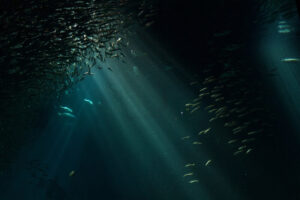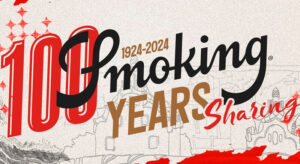THE MOST INFLUENTIAL DIRECTORS OF CINEMA

Who qualifies as the greatest directors of all time is a far more challenging question to address than one might initially presume. Is it those who laid the early foundations of cinema with their pioneering work? Is it those who have made the most remarkable advancements in the art of filmmaking? Or could it be those directors whose contributions are essential knowledge for every filmmaker and screenwriter?
From the era of silent films to the contemporary 21st-century cinema, they have crafted many of the quintessential cinematic masterpieces – the films that stand as the epitome of filmmaking.
Listed below, are these exceptional directors!
THE MOST INFLUENTIAL DIRECTORS OF ALL TIME
JEAN RENOIR
The elevation of Jean Renoir’s status in the English-speaking world, particularly during the 1990s, owes much to the influential British film critic David Thomson. Thomson boldly asserted that Renoir was the greatest film director in history, a declaration that significantly boosted Renoir’s recognition. While Renoir had long enjoyed a lofty reputation, particularly in his homeland of France, Thomson played a pivotal role in introducing him to a younger generation, who ultimately concurred with his assessment of this French cinematic maestro.
Renoir’s filmography boasts remarkable works such as:
- “Boudu sauvé des eaux” (1932)
- “The Crime of Monsieur Lange” (1936)
- “Partie de campagne” (1936)
- “La Bête Humaine” (1938)
Nevertheless, even these outstanding creations pale in comparison to the pair of cinematic masterpieces that collectively represent the pinnacle of achievement by a single filmmaker: “La Grande Illusion” (1937) and “La règle du jeu” (1939).
In essence, these two films simultaneously reflect on World War One and anticipate the impending World War Two, capturing the zeitgeist on the brink of a global conflict.
CHRISTOPHER NOLAN’S MOVIES: WHICH IS YOUR FAVORITE?
JEAN-LUC GODARD
The recent passing of Jean-Luc Godard served as a poignant reminder of his central and indeed groundbreaking role in the world of cinema, especially for film enthusiasts of the 21st century.
Martin Scorsese famously referred to “À bout de souffle” (1960) as “the axis of film history”, symbolically representing the pivotal moment when cinema transitioned from the conventional studio-bound filmmaking of the past to the considerably swifter and more audacious street filmmaking that would follow.
“À bout de souffle” stands as one of the most remarkable debut films in cinematic history, akin to the revolutionary impact of “The Velvet Underground and Nico” in the realm of pop music.
However, many of the films that followed it were equally inventive and uniquely cinematic, firmly establishing their identity as films rather than adaptations of plays or books:
- “Le Mepris” (1963) resembled a French interpretation of Fellini’s “8 ½”
- “Bande à part” (1964) felt like an extension of or sequel to “À bout de souffle”
- “Alphaville” (1964) presented a sci-fi narrative set in a contemporary setting, making it all the more intriguing
- “Pierrot le Fou” (1965) reunited Godard with Jean-Paul Belmondo from “À bout de souffle”, though this time Belmondo played the role of the pursuer rather than the pursued
- “Week-End” (1967) unfolded as an apocalyptic road trip movie, or more precisely, an apocalyptic traffic jam.
INGMAR BERGMAN
Bergman’s association with Fellini was a recurring theme, not only in the eyes of Woody Allen but also in the assessment of nearly every serious scholar of post-war cinema. This connection arose precisely because, on the surface, they seemed so dissimilar: Fellini, the affectionate and sensuous Italian filmmaker, appeared in stark contrast to Bergman and his films, characterized by their austere and seemingly unfeeling analysis.
However, just as there was a rational and analytical mind at work in many of Fellini’s films, so too did Bergman infuse humor, passion, and even moments of laughter into many of his own works!
In a manner reminiscent of Fellini, Bergman achieved a breakthrough in the mid-1950s, following several earlier unsuccessful films:
- “Sommarnattens leende” (1955) stands out as a romantic comedy that starkly contrasts with much of his later, darker output. And much like Fellini, once Bergman had attained national and then international recognition, his creative momentum knew no bounds.
- “Det sjunde inseglet” (1957)
- “Smultronstället” (also 1957)
- “The Virgin Spring” (1960)
- “Through A Glass Darkly” (1961) all represented magnificent and melancholic masterpieces that effectively pioneered the genre known as “Scandi-Noir,” a genre that would gain prominence four decades before the emergence of “Forbrydelsen” (The Killing) and “The Bridge.”
BEST ANIME OF ALL TIME TO WATCH ON NETFLIX, AMAZON… AND SO ON!
FEDERICO FELLINI
Now, we turn our attention to the dual influences on Woody Allen and numerous other filmmakers in the latter half of the 20th century, representing the contrasting poles (southern and northern) of post-war European cinema: Federico Fellini and Ingmar Bergman.
Both of these individuals were essentially cinematic powerhouses, acting as one-person film industries that produced a series of timeless classics. These works not only earned critical acclaim and commercial success but also expanded the boundaries of what was achievable in the world of cinema.
Fellini initially emerged from the Italian neorealism movement that followed World War Two. However, he truly came into his own during the 1950s with “I Vitelloni” (1953), a film that held a special place in Stanley Kubrick’s heart and greatly influenced his decision to pursue a career in filmmaking.
Another pivotal creation from this period was “La Strada” (1954), a film that portrayed one of the most unconventional love stories in the annals of cinema, revolving around the relationship between a circus strongman and a diminutive female clown whom he mistreats.
Yet, Fellini’s creative journey was far from over, as he continued to capture the evolving world in Italy following the devastation of World War Two. In “Le notti di Cabiria” (1957), he once again touched the hearts of cinema audiences with the story of a prostitute striving to break free from her wretched life. “La Dolce Vita” (1960) introduced the world to the Paparazzi and the intrusive press culture they brought with them.
Lastly, with “Otto e mezzo”, Fellini crafted arguably the finest film ever made about the art of filmmaking itself.
ROBERT BRESSON
Jean-Luc Godard, who unsurprisingly finds himself on this list as well, famously expressed that Bresson is to French cinema what Dostoevsky is to the Russian novel and Mozart is to German music. However, Bresson often remains in the shadows of French cinema, situated between the brilliance of Renoir in the 1930s and the Nouvelle Vague (New Wave) movement led by Godard, Truffaut, and others in the 1960s. Nevertheless, Bresson’s films, once experienced, are seldom, if ever, forgotten.
In many respects, Bresson was to cinema what composers like John Adams and La Monte Young were to music: a master of minimalism. It seemed as though, following the overwhelming and almost world-altering extravagance of World War Two, Bresson aimed to strip away everything superfluous to return to the essence of storytelling on the screen.
He accomplished this brilliantly in several cinematic masterpieces, including “Un condamné à mort s’est échappé” (1956), which narrates the daring escape attempt of a French Resistance member from a Nazi prison; “Pickpocket” (1959), a film that embodied the spirit of the Nouvelle Vague before the term even existed; and “Au Hasard Balthazar” (1966), a remarkable film centered around a donkey whose harsh mistreatment by its owners evokes more empathy than most films focusing on human characters.
BILLY WILDER
With all due respect to Fritz Lang, Max Ophüls, and even Billy Wilder’s cinematic idol, Ernst Lubitsch, it’s Billy Wilder from Austria who stands as the sole foreign-born director capable of challenging and perhaps surpassing England’s Alfred Hitchcock as the most accomplished “outsider” chronicler of America.
While Wilder may have produced fewer masterpieces compared to Hitchcock and numerous other directors featured on this list, his top five films can easily compete with the finest classics of any other director.
Wilder’s career as a great director can be divided into two remarkable phases, separated by approximately a decade. The first phase unfolded during the 1940s and early 1950s, during which he created some of the greatest cinematic works, including “Double Indemnity” (1945), often regarded as one of the most exceptional film noirs. He followed this with “Sunset Boulevard” (1950), a masterpiece that delves into the heart of Hollywood, and “Ace In The Hole” (1951), a profound exploration of news reporting.
Nonetheless, it was Wilder’s “double feature” toward the end of the 1950s that cemented his reputation as a cinematic maestro. “Some Like It Hot” (1959), although produced outside the 1930s era, remains the quintessential screwball comedy. Simultaneously, “The Apartment” (1960) can be argued to be the finest comedy-drama ever created.
Remarkably, no other director has ever consecutively crafted two such vastly different masterpieces within a single year!
BEST OLD WAR MOVIES: CLASSICS OF CINEMA
ALFRED HITCHCOCK
It’s quite ironic that Alfred Hitchcock was universally referred to as “Hitch” because in the early 21st century, there are several “hitches” or issues associated with any admiration for Hitchcock. These concerns encompass voyeurism both on and off the screen, his fixation on his leading actresses (which prompted Grace Kelly, one of his most prominent leading ladies, to relocate to Europe), and even the somewhat amateurish rear projections of moving cars that tend to make many 21st-century viewers cringe or even burst into laughter.
Nonetheless, there remains no doubt that Hitchcock stands as one of the most exceptional film directors in the history of cinema, spanning various cinematic eras. His breakthrough came with the silent classic, “The Lodger” (1927), a remarkably malevolent take on the Jack The Ripper story. He then went on to create early sound classics such as “The 39 Steps” (1935) and “The Lady Vanishes” (1938), effectively establishing the template for subsequent thrillers and action movies.
After attracting the attention of Hollywood with “Rebecca” (1940), Hitchcock became one of the greatest foreign-born directors to work in America. He essentially defined the landscape of 1950s American cinema, with a string of suspenseful classics, ranging from “Rear Window” (1954) to “Vertigo” (1958) and “North by Northwest” (1959). These films epitomized the existential fear gripping humanity during the decade following Hiroshima.
In “Psycho” (1960), Hitchcock notably departed from suspense and effectively pioneered the horror genre.
ROBERT ALTMAN
Similar to Hollywood’s own trajectory, Altman experienced two distinct golden periods in his career.
The first spanned nearly a decade, encompassing almost the entirety of the 1970s when he crafted a trilogy that, while appearing sprawling on the surface, was meticulously plotted.
This trilogy consisted of “MAS*H” (1970), “McCabe and Mrs. Miller” (1971), and “Nashville” (1975). Once more, like Hollywood, Altman’s second golden era arrived in the early 1990s and was notably shorter than the first.
It essentially revolved around “The Player” (1992) and “Short Cuts” (1993), a pair of late-career Altman masterpieces that served as a powerful reminder of his distinctive and brilliant filmmaking talent.
ANDREI TARKOVSKY
Andrei Tarkovsky can be likened to the James Joyce of the film world—an artist who directed a relatively small number of films, just as Joyce authored a limited number of books. However, much like Joyce, each of Tarkovsky’s cinematic creations emerged as a masterpiece in its own right.
Tarkovsky’s illustrious filmography, consisting of seven remarkable works, commenced with “Ivan’s Childhood” (1962), a cinematic masterpiece that explored the themes of childhood and war with exceptional depth. This was followed by “Andrei Rublev” (1966), a biographical film about the 15th-century Russian painter of the same name, and “Solaris” (1972), widely regarded as the finest Soviet science fiction film ever made.
Nevertheless, it was in his subsequent three films that Tarkovsky solidified his status as one of the true luminaries of cinema. “Mirror” (1975), “Stalker” (1979), and “Nostalghia” (1983) saw him carve out his own distinct genre.
He not only pioneered but also perfected an incredibly individual and idiosyncratic filmmaking style in which images underwent a level of processing and even distortion that rivaled anything seen since the Silent Era when only images, devoid of sound, could be manipulated.
Lastly, “The Sacrifice” (1986) marked a cinematic reinterpretation of the Abraham story, where a man attempts to negotiate with God to avert nuclear Armageddon. Produced during the height of the First Cold War and while Tarkovsky himself battled cancer, this film stands as the definitive portrayal of apocalyptic times, remaining eerily pertinent even in the 21st century.
YASUJIRŌ OZU
Similar to several other directors on this list, Yasujirō Ozu embarked on a lengthy apprenticeship in the realm of filmmaking. He directed his inaugural film at the tender age of 24 and continued making numerous more films over the course of a quarter-century before eventually discovering his ideal subject matter and style. The wait, however, proved to be profoundly rewarding, as Ozu’s late masterpieces, particularly “Tokyo Story” (1953), which some argue is the greatest cinematic exploration of family ever created, rank among the most profoundly affecting and exquisitely crafted films in history.
In terms of plot, “Tokyo Story” may very well be the simplest truly great film ever made. It revolves around an elderly Japanese couple visiting their children in Tokyo, including their daughter-in-law, now a widow. However, akin to Chaucer’s “Canterbury Tales,” this Tokyo-based narrative encompasses the entirety of human existence. It masterfully portrays the inevitable conflicts between generations, all captured through impeccable performances and cinematography.
While “Tokyo Story” stands as Ozu’s unequivocal masterpiece, his reputation does not hinge solely on this film. His late-career achievements also include “Early Spring” (1956), a narrative following a discontented office worker’s attempt to rejuvenate his stagnant life through an affair with a co-worker, and “An Autumn Afternoon” (1962), his final film, wherein an elderly man endeavors to find a suitable husband for his daughter before his own passing.
RECENT POSTS
HOW TO GET OVER A BREAKUP: SOME TIPS TO HELP YOU
To learn how to overcome a romantic breakup, you must keep in mind that although it is a difficult task to achieve, the truth is that you can always move forward. Human resilience will help you overcome any adversity. The breakup of a couple is a painful experience, an overwhelming situation that affects you physically, […]
BAD COUPLE TATTOOS: HORRIBLE BUT FUNNY!
Obtaining a tattoo on the body is a desire that nearly everyone wishes to accomplish in their lifetime. Making mistakes is a natural part of life, yet certain individuals have unfortunately selected ill-advised tattoos that come with lasting consequences. These couples have selected mismatched tattoos that won’t simply fade away within a week. Take a […]
ORBITING DATING, WHAT IS IT?
Just when you thought you were getting the hang of what ghosting was, or even the whole stalking thing, along comes another new term: orbiting. It seems like navigating relationships has become even trickier since social media stepped into the scene. New terms and behaviors keep popping up, ones we never had to deal with […]
DOES MARIJUANA HELP WITH STRESS, REAL OR MYTH?
If there’s one thing that marijuana reigns supreme for, it’s because it has always had an incredibly close relationship with stress. The medicinal benefits of cannabis are the solution to everything that stress can generate in our bodies. This leads us precisely to want to delve into cannabis and stress in this post and take […]
SPANNABIS BARCELONA 2024: THE MOST SPECIAL NEWS!
Being in Barcelona for the International Cannabis Awards and Spannabis Fair Week is like visiting the Holy Grail of the marijuana world. Thousands of enthusiasts descended upon the glorious ancient city of Barcelona on the Spanish Mediterranean coast, both as tourists and smokers, eager to immerse themselves in the sights and the smokes. Unfortunately, the […]
GREENWASHING: WHAT IS IT AND HOW TO RECOGNIZE IT?
Every day, people are becoming increasingly aware of their role in society and the need to protect and care for the environment. It’s a conscious and radical shift that allows no delays or hesitations. This has led some companies, whose economic activities affect the environment and health, to significantly reduce their consumption levels and therefore […]
WHY IS MY PHONE GETTING HOT? HOW TO AVOID IT
All phones can experience occasional heat buildup, which becomes problematic when it reaches a level that causes discomfort or triggers unusual behavior. Fortunately, there are simple measures you can take to prevent your phone from overheating. Why does my phone heat up? Typically, phone overheating occurs due to factors such as excessive usage, a stressed […]
TAKE YOUR ADRENALINE TO THE MAXIMUM WITH POWERBOCKING
Powerbocking, also referred to as “power-rizing,” “blade running,” and “jump stilting,” is a sport where athletes utilize specialized leg attachments called jumping stilts. These jumping stilts are curved in form and equipped with springs, enabling users to achieve remarkable heights when jumping. They are known to enhance an athlete’s performance across various activities, with claims […]
UNDERWATER MUSEUM: ART UNDERWATER IN CANCUN
If you love exploring the underwater world, this museum is for you. The Underwater Museum of Art (Museo Subacuático de Arte – MUSA) in Cancun, Mexico, is the perfect destination for all enthusiasts of the underwater world. This incredible underwater museum features a wide variety of artistic installations and sculptures designed for you to enjoy […]
MOUNT RAINIER NATIONAL PARK: A PLACE YOU SHOULD KNOW
Mount Rainier became a national park because people with different views worked together. They wanted to save its beautiful scenery from being lost forever. Over six years, several businessmen, scientists, educators, mountaineers, and environmentalists united to advocate before Congress to protect Mount Rainier as a national park. Their hard work paid off when President McKinley […]
ROCKVILLE FESTIVAL 2024 LINEUP, ARTISTS, AND MORE
In the vibrant realm of music, Welcome to Rockville has arisen as a beacon for rock and metal enthusiasts. This festival, which had its humble beginnings in Jacksonville, has evolved dramatically, leaving an indelible mark on the music scene. In this editorial journey, we will delve into the history of Welcome to Rockville, from its […]
DEADPOOL 3: THE FAVORITE ANTI-HERO RETURNS
The buzz surrounding the film is undeniable, and with Ryan Reynolds and Hugh Jackman returning as one of the most beloved X-Men, Wolverine, many rumors suggest that Deadpool 3 has every chance of becoming the biggest event in the Spider-Man Multiverse. Especially since it will be the only confirmed Marvel Studios film for 2024! What […]
WHAT IS BLACKWORK TATTOO?
Blackwork tattooing is a style that relies exclusively on black ink, favored by many tattoo artists who prioritize its use over other colors. Currently, there’s a significant demand for this style, reflecting its popularity among both artists and clients! Executing blackwork tattoos poses a challenge due to its versatility, encompassing various techniques and design approaches. […]
OSCARS 2024: THE WINNERS OF THE 96TH EDITION
The Oscars might not be breaking any viewership records in recent years. The numbers are dropping, and the competition is getting tougher. Audiences are tuning into streaming platforms or exploring other forms of entertainment like video games, the new big thing in the leisure industry. The Oscars persist and will continue to be a spectacle […]
CANNABIS CAKE: SPACE CAKE RECIPE
Space cakes truly live up to their name. It’s like having your favorite cake but with a magical touch of herb! Almost every coffee shop in Amsterdam has some type of space cake on their menu, and more people are daring to try them to experience a discreet and delicious edible high. The good news […]
SMOKING PAPER TURNS 100 AND CELEBRATES IT: 100 YEARS SHARING!
Smoking Paper Turns 100 Years, discover the contest: 100 years sharing.
Newsletters
Last Minute new From Roll & Feel Sign-up
news





 smokingpaper
smokingpaper


























